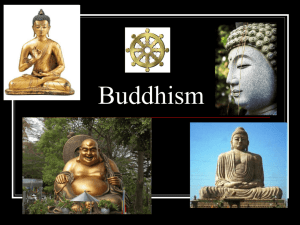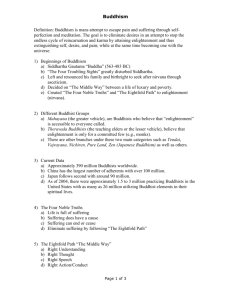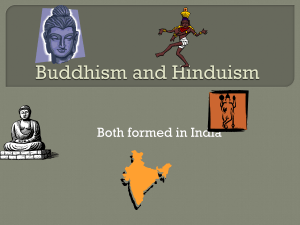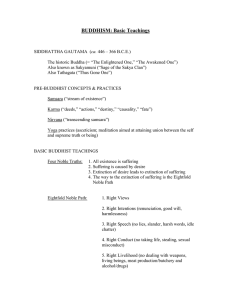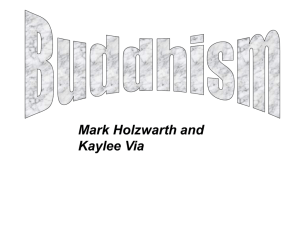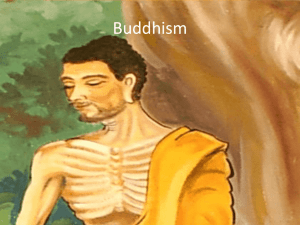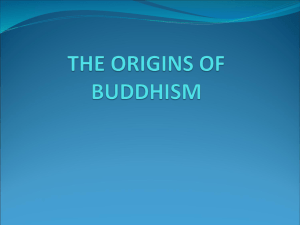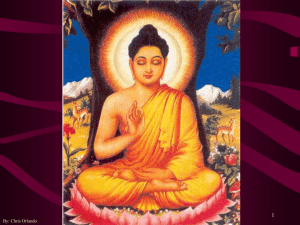fasting - Baltimore City Public School System
advertisement
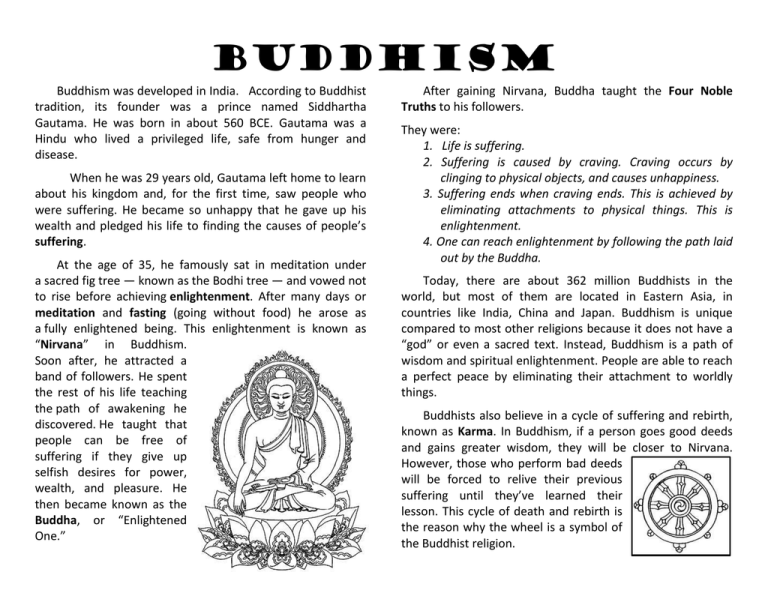
Buddhism Buddhism was developed in India. According to Buddhist tradition, its founder was a prince named Siddhartha Gautama. He was born in about 560 BCE. Gautama was a Hindu who lived a privileged life, safe from hunger and disease. When he was 29 years old, Gautama left home to learn about his kingdom and, for the first time, saw people who were suffering. He became so unhappy that he gave up his wealth and pledged his life to finding the causes of people’s suffering. At the age of 35, he famously sat in meditation under a sacred fig tree — known as the Bodhi tree — and vowed not to rise before achieving enlightenment. After many days or meditation and fasting (going without food) he arose as a fully enlightened being. This enlightenment is known as “Nirvana” in Buddhism. Soon after, he attracted a band of followers. He spent the rest of his life teaching the path of awakening he discovered. He taught that people can be free of suffering if they give up selfish desires for power, wealth, and pleasure. He then became known as the Buddha, or “Enlightened One.” After gaining Nirvana, Buddha taught the Four Noble Truths to his followers. They were: 1. Life is suffering. 2. Suffering is caused by craving. Craving occurs by clinging to physical objects, and causes unhappiness. 3. Suffering ends when craving ends. This is achieved by eliminating attachments to physical things. This is enlightenment. 4. One can reach enlightenment by following the path laid out by the Buddha. Today, there are about 362 million Buddhists in the world, but most of them are located in Eastern Asia, in countries like India, China and Japan. Buddhism is unique compared to most other religions because it does not have a “god” or even a sacred text. Instead, Buddhism is a path of wisdom and spiritual enlightenment. People are able to reach a perfect peace by eliminating their attachment to worldly things. Buddhists also believe in a cycle of suffering and rebirth, known as Karma. In Buddhism, if a person goes good deeds and gains greater wisdom, they will be closer to Nirvana. However, those who perform bad deeds will be forced to relive their previous suffering until they’ve learned their lesson. This cycle of death and rebirth is the reason why the wheel is a symbol of the Buddhist religion.

